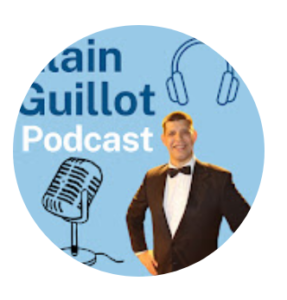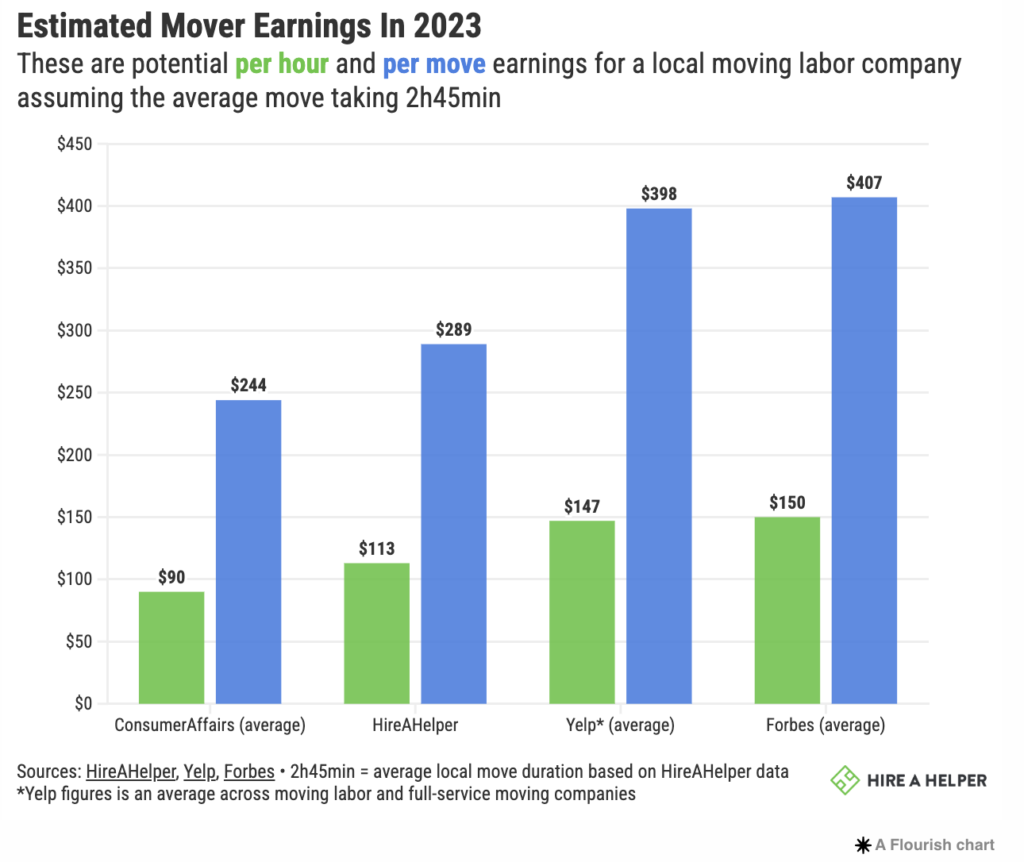
Looking for creative ways to generate income beyond the typical 9-to-5? In this article, 16 financially independent people share real-life stories of unconventional income streams they’ve successfully leveraged on their path to financial freedom.
From flipping niche collectibles online to building mobile apps and renting out specialized equipment, these insights offer practical advice and inspiration for anyone seeking to diversify their income and think outside the box.
- Flip Niche Collectibles Online
- Flip Expired Domains for Profit
- Develop Useful Mobile Applications
- Create Online Courses for Therapists
- Offer Ice as a Subscription Service
- Provide Emergency Phone Consultations
- Monetize Drone Inspections Separately
- Acquire and Improve Underperforming Blogs
- Sell Niche Digital Products Online
- Rent Out Specialized Equipment
- Sell Stock Photos Online
- Invest in Income-Generating Websites
- License Valuable Industry Data
- List Properties on Airbnb
- Publish Ebooks on Amazon Kindle
- Embrace Unexpected Opportunities
1.) Flip Niche Collectibles Online
Exploring unconventional income streams is like finding hidden treasures; it’s about spotting opportunities in unexpected places. One such stream I’ve tapped into is buying and flipping niche collectibles sourced from online marketplaces. Initially, I stumbled upon this while pursuing a personal hobby. Seeing the high demand and low supply for certain vintage items, I realized there was potential to turn this into a lucrative side business. The key here is to develop a keen eye for what has high resale value and stay informed about the trends within that niche.
For anyone interested in pursuing this avenue, I’d recommend starting with a category you’re passionate about, as this naturally increases your understanding and interest in collecting items.
Next, it’s crucial to learn the best places for acquiring collectibles at lower prices, whether that’s thrift stores, estate sales, or online auctions. Regularly engaging with communities and forums can also provide insights and opportunities to buy and sell. Ultimately, while this might seem like just a fun hobby, with the right approach, it can become a significant part of achieving Financial Independence.
It’s essential to approach this with a mixture of enthusiasm and caution; start small to understand the market dynamics before fully diving in. Balancing patience with smart, informed decisions can open up an exciting path towards not just financial goals, but also personal fulfillment in seeing your collections bring joy to others as well. — Alex Cornici, Writer, The Traveler
2.) Flip Expired Domains for Profit
One of the most unconventional income streams I leveraged on my path to Financial Independence was expired domain flipping: buying undervalued domain names with strong SEO authority and reselling them at a premium.
A few years ago, I was searching for a domain for a side project when I stumbled upon an auction site selling expired domains. Out of curiosity, I bought one for $15 that had thousands of quality backlinks from reputable sites. Within two weeks, I flipped it to a niche blogger for $750: a 4,900% return on investment. That’s when I realized there was a hidden market for domains that still carried strong SEO value.
After that first success, I developed a system to find, evaluate, and flip domains efficiently:
- Finding High-Value Expired Domains – I used tools like Ahrefs, SpamZilla, and ExpiredDomains.net to search for domains with strong backlink profiles.
- Assessing SEO Value – Instead of buying any expired domain, I looked for high-authority links, clean backlink profiles, and past relevance to industries in demand (finance, health, tech).
- Selling to the Right Buyers – I joined Facebook groups, niche forums, and SEO communities, where bloggers and businesses actively sought pre-aged domains to boost rankings.
One of my best flips was a tech-focused domain I purchased for $120. It had backlinks from major publications and had been a trusted resource in the industry. Within a month, I sold it to a startup for $5,000: because for them, the built-in SEO authority saved months of ranking effort.
If you want to get into domain flipping:
- Start small – Buy one or two domains and learn the process before scaling.
- Focus on SEO value, not just catchy names – A strong backlink profile is what makes an expired domain valuable.
- Network in the right places – Many buyers are in SEO communities, niche blogs, and online business groups.
Expired domain flipping isn’t about luck: it’s about recognizing digital real estate opportunities before others do. If you can spot value where others see nothing, you can build a profitable and scalable income stream. — Ahmed Yousuf, Financial Author & SEO Expert Manager, CoinTime
3.) Develop useful Mobile Applications
I earn well as a CTO, but I want that financial security where I do not have to depend on a single income stream. That is why I started developing mobile applications as an additional source of revenue. Since I am already a software developer, shifting into mobile apps was a natural transition. The technical foundation was there, and I saw an opportunity to build something outside of my daily work.
I discovered this opportunity from a colleague of mine who had been making passive income through mobile apps for years. He built simple apps that solved everyday problems and made money through ads and subscriptions. That conversation changed how I looked at mobile development. I decided to start with something I understood well. My first app was an expense tracker designed for freelancers who struggle with budgeting and tax prep. I kept it simple, focusing on an intuitive interface and automation features. After launching it in the app stores, I introduced a premium version with added features, which turned it into a passive income stream. I earn about $5,000 to $7,000 per month from this app alone, and that number grows as more users download and subscribe.
For anyone interested in pursuing this, the first thing that you need to do is find a common problem that does not have a convenient solution yet. Successful apps do not have to be groundbreaking. They just need to be useful. Start small, validate your idea with a test audience, and make the experience smooth and reliable. Mobile app development is one of the few income streams where effort upfront can turn into long-term financial stability without constantly trading time for money. — Paul DeMott, Chief Technology Officer, Helium SEO
4.) Create Online Courses for Therapists
As a Licensed Clinical Social Worker and digital nomad, one unconventional income stream I’ve leveraged is the creation of online courses and communities for therapists. It started with “DIY Insurance Billing for Private Practice,” which has attracted over 950 clinicians. This course was born out of my own struggles with insurance billing. By changing my learning into a resource, I’ve tapped into an overlooked need among therapists seeking autonomy and financial stability.
In addition, I founded the “Bill Like A Boss” community, offering a support network and a directory for therapists to find billers and virtual assistants. This not only provided value but established me as a thought leader in a niche market. By addressing this specific pain point, the model created additional revenue while enhancing client satisfaction and loyalty.
For those interested in a similar path, identify a gap in your professional area where you possess unique insights or skills. Develop a resource or service that addresses this need, and build a community around it. Emphasize practical support and collaboration to create a product or service that stands out. — Kym Tolson, Therapist Coach, The Traveling Therapist
5.) Offer Ice as a Subscription Service
One unconventional income stream I’ve successfully leveraged is the “as-a-service” business model, specifically in the ice equipment space. Most businesses traditionally buy or lease ice machines, dealing with maintenance, repairs, and eventual replacements. We flipped the script by offering ice as a subscription service-turning what used to be a hassle into a predictable, all-inclusive solution for businesses. Instead of making a significant upfront investment, customers pay a monthly fee for equipment, maintenance, and even backup ice if needed. This model creates steady, recurring revenue while eliminating customers’ most significant pain points.
I discovered this opportunity by recognizing an overlooked challenge in the food service and hospitality industries. Ice machines are essential but notoriously unreliable, and when they break down, it disrupts business. I saw how companies were stuck in a cycle of costly repairs or expensive replacements. We removed customers’ financial and operational headaches by shifting from ownership to service while building a long-term, scalable revenue stream.
For others looking to pursue unconventional income streams, my advice is to rethink how everyday products or services are delivered. Find something businesses or consumers rely on but don’t enjoy managing, then explore how a subscription or managed-service approach could make their lives easier. Stability, convenience, and predictability are powerful selling points. Look for inefficiencies, talk to customers, and see where to add value. Often, the best opportunities aren’t about reinventing the wheel but making it roll more smoothly. — Travis Rieken, Sr. Director of Product Management, Easy Ice
6.) Provide Emergency Phone Consultations
Plumbing work usually brings to mind hands-on labor, but there’s another way to earn: charging for emergency phone consultations. Plenty of homeowners panic over a small leak or a backed-up sink, and sometimes all they need is guidance rather than an immediate service call. I set up a system where customers could pay a flat $50 fee for a quick troubleshooting session, helping them avoid unnecessary expenses while making sure my time was compensated. This worked well for after-hours calls, since many people preferred a lower-cost solution instead of paying $200+ for an emergency visit. Over time, this turned into a consistent side income without extra travel or physical labor.
The idea came naturally after seeing how often customers called with simple problems. I figured if I was already answering questions, I might as well make it an official service. For anyone considering a similar approach, start by identifying where your expertise could provide quick, high-value solutions. Setting up a dedicated phone line or online booking system makes it easy, and promoting it through social media or existing clients can bring in steady business. Turns out, a small shift in how you offer services can add thousands to your income each year. — Caleb John, Director, Exceed Plumbing
7.) Monetize Drone Inspections Separately
Drones were originally just a tool for our roofing business, but it didn’t take long to see another opportunity. Homeowners, insurance companies, and real estate agents needed high-resolution roof inspections even when they weren’t planning repairs. So, we started offering drone-based reports as a separate service, charging $150 per scan. This turned into a profitable source of side income, especially since our AI analysis provided insights that traditional inspections didn’t. Given that a single drone could handle up to 10 inspections per day, this quickly added thousands in extra revenue without major operating costs.
The idea came after noticing that not every roof inspection led to a job, but the demand for assessments was still there. Instead of only using drones for internal purposes, we turned them into a paid service. For those in tech-driven industries, there’s often a way to take existing tools and monetize them separately. Sometimes, the things that support your main business can bring in just as much revenue when positioned as independent services. — Nathan Mathews, CEO and Founder, Roofer
8.) Acquire and Improve Underperforming Blogs
One unconventional income stream that worked surprisingly well for me was acquiring underperforming blogs, improving their content and SEO, and turning them into revenue-generating assets. Most people think of websites as businesses that require years to build, but I realized that buying neglected blogs with decent domain authority and traffic potential was a faster way to scale.
I discovered this by accident. I was deep into content marketing, and while working with clients, I noticed how many businesses let their blogs stagnate. Some had strong backlinks and history but were mismanaged or abandoned. So I started making offers, acquiring them for relatively minor costs, and applying the exact strategies I used for clients: cleaning up the content, fixing technical SEO issues, and creating a long-term content plan. Within months, traffic (and revenue) would grow through ad monetization, affiliate marketing, or even reselling the blog for a profit.
Anyone interested in this should start small. Look for blogs in niches you understand, ideally with decent backlink profiles and some organic traffic. Many are run by hobbyists who’ve lost interest so that you can negotiate good deals. But don’t just buy and hope; have a clear plan to improve the site. SEO, fresh content, and proper monetization can quickly turn a struggling blog into a valuable asset.
This strategy isn’t discussed enough, but it’s a scalable way to create income streams without starting from scratch. Knowing how to spot potential, move quickly, and execute effectively is key. — James Parsons, CEO, Content Powered
9.) Sell Niche Digital Products Online
Selling niche digital products is an unconventional yet highly effective income stream that provides scalability and passive revenue with minimal ongoing effort. Unlike content-driven monetization strategies that require continuous engagement, digital products — such as financial templates, investment research, and specialized e-books — offer a one-time creation model with unlimited sales potential. This approach is particularly useful for professionals who can leverage their expertise to create high-value, ready-made solutions for a specific audience.
My journey into digital products began when I realized that many individuals and small business owners struggled with financial planning and investment tracking. I had developed budget templates, financial calculators, and investment worksheets for personal use, but after refining them for broader usability, I started selling them through platforms like Gumroad, Etsy, and Sellfy. As demand grew, I optimized listings, bundled complementary products, and used SEO-driven marketing to reach more buyers, turning a side project into a steady revenue stream. Continue Reading…





